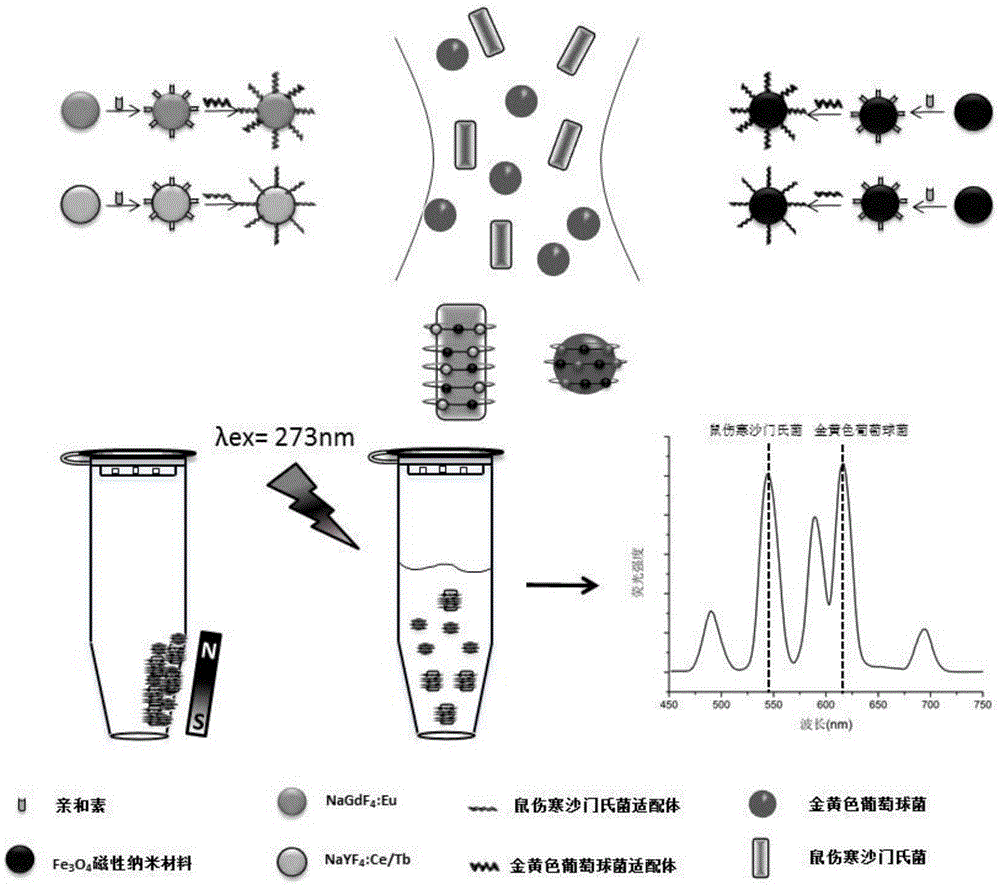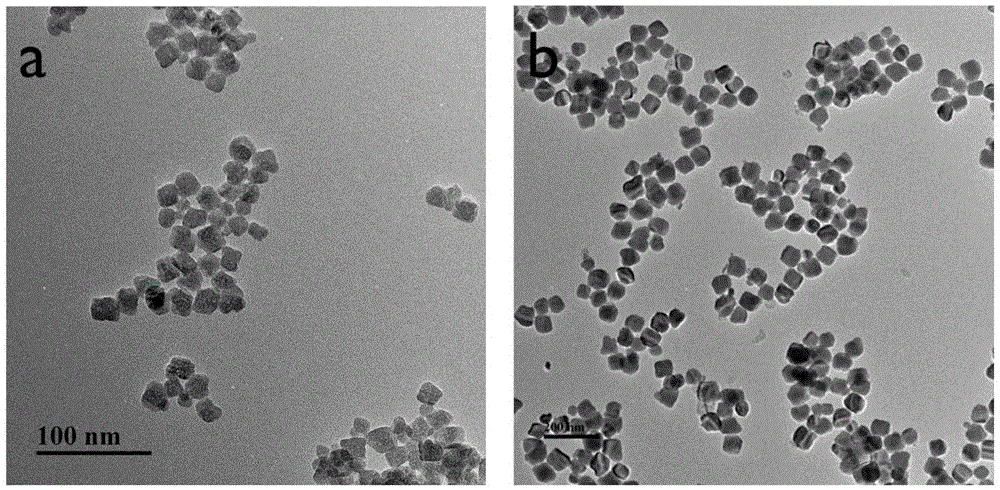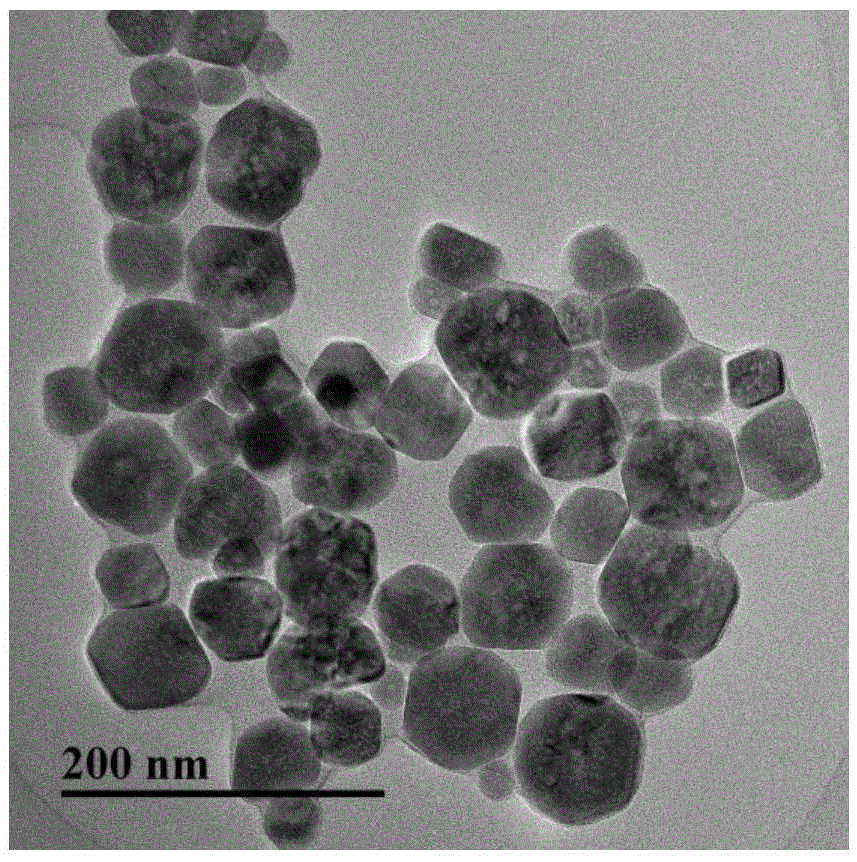Method for simultaneously detecting two types of pathogenic bacteria based on two-color time-resolved fluorescence labeling-magnetic separation aptamer recognition
A time-resolved fluorescence and aptamer technology, applied in the fields of nanomaterials and analytical chemistry, can solve the problems of limited application, high detection cost, and antibodies are easily affected by external conditions, so as to improve accuracy and stability, and simplify the detection process. , the effect of easy chemical modification
- Summary
- Abstract
- Description
- Claims
- Application Information
AI Technical Summary
Problems solved by technology
Method used
Image
Examples
Embodiment 1
[0029] Example 1: Detection of Salmonella and Staphylococcus aureus in milk samples and comparison with plate count method after standard addition:
[0030] Sample pretreatment: Take 10ml of milk purchased from a local supermarket, centrifuge at 12000r / min for 15min, then use a 0.22μm filter membrane to remove protein and fat in the milk, and then use Tris-HCl solution to adjust the pH value of the milk sample to 7.7. The treated milk sample was divided into 9 parts, each with a volume of 900 μL, and then 100 μL of cultures of Salmonella typhimurium and Staphylococcus aureus at different concentrations were added to the above milk samples, so that the total volume of the sample reached 1 mL. Take 100 μL of samples containing different concentrations of Staphylococcus aureus for plate counting, and another 100 μL of samples containing different concentrations of bacterial liquid, use the method of this experiment for detection, and compare the obtained detection results with the...
PUM
 Login to View More
Login to View More Abstract
Description
Claims
Application Information
 Login to View More
Login to View More - R&D
- Intellectual Property
- Life Sciences
- Materials
- Tech Scout
- Unparalleled Data Quality
- Higher Quality Content
- 60% Fewer Hallucinations
Browse by: Latest US Patents, China's latest patents, Technical Efficacy Thesaurus, Application Domain, Technology Topic, Popular Technical Reports.
© 2025 PatSnap. All rights reserved.Legal|Privacy policy|Modern Slavery Act Transparency Statement|Sitemap|About US| Contact US: help@patsnap.com



